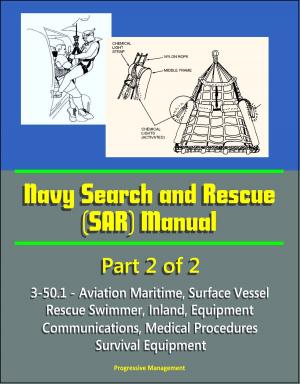The Rise and Fall of Dyna-Soar: A History of Air Force Hypersonic R&D, 1944-1963 - Pathfinding Effort to Develop a Transatmospheric Boost Glider and Spaceplane, Manned Military Space Program
Nonfiction, Science & Nature, Technology, Aeronautics & Astronautics, Science, Physics, Astrophysics & Space Science| Author: | Progressive Management | ISBN: | 9781310782213 |
| Publisher: | Progressive Management | Publication: | April 1, 2015 |
| Imprint: | Smashwords Edition | Language: | English |
| Author: | Progressive Management |
| ISBN: | 9781310782213 |
| Publisher: | Progressive Management |
| Publication: | April 1, 2015 |
| Imprint: | Smashwords Edition |
| Language: | English |
Professionally converted for accurate flowing-text e-book format reproduction, this is an informative history of the USAF Dyna-Soar manned spaceplane program.
Chapter 1 - Developing Technology To Meet An Expected Future * Chapter 2 - Pushing The State-Of-The-Art * Chapter 3 - Continuing To Push The State-Of-The-Art * Chapter 4 - Staying On Course * Chapter 5 - Struggling To Maintain The Military Mission * Chapter 6 - Manned Military Space Programs * Chapter 7 - The Dyna-Soar Cancellation
Dyna-Soar was not a technological failure. It could have flown. On the other hand, Dyna-Soar's cancellation marked a political-economic failure, illustrating the need for a rapid and clear consensus of purpose, single-minded and politically astute leadership, and the near-term attainment of advanced technology. Once Dyna-Soar was canceled, NASA began to acquire an increasing amount of the Air Force's hypersonic research until its Space Shuttle offered the Air Force another chance for a joint venture equal in scope to Dyna-Soar. This time NASA would take the lead in developing a new evolutionary technological system.
While Dyna-Soar began in 1957, the roots of Air Force hypersonic R&D go back at least to 1944. In that year Henry H. "Hap" Arnold, the commanding general of the Army Air Forces (AAF), identified the need for advanced airpower weapon systems to meet the anticipated postwar enemy threat. Hoping to capitalize on expanding R&D investments during the war and on public sentiment awakened to the potential dangers of the Soviet Union after the war, Arnold and other advocates of a unified national program of aeronautical development sought to create the means for forecasting airpower weapon systems and organizing new institutions devoted solely to aerospace R&D. Germany's advanced technological capabilities, especially the supersonic flights of the V-2 rocket, illustrated how America might no longer be immune from enemy attack. As the Soviet Union developed nuclear warheads, intercontinental ballistic missiles (ICBMs), and long-range strategic airpower, the need to maintain the technological superiority of America's airpower assets seemed all the more important in determining the outcome of future wars. Harnessing the ability to push the aeronautical state-of-the-art to ever greater speeds, higher altitudes, and flights over longer distances would this be central to the initiatives of the AAF's Scientific Advisory Group (SAG), created in September 1944 to search the world for the most advanced aeronautical ideas and determine the potential of these ideas for future wartime applications. Taking the SAG's initial forecasts a step farther, a second AAF-created institution-RAND (an acronym for R&D Corporation, a non-profit R&D agency created by Arnold and Douglas Aircraft Corporation president Donald Douglas to study intercontinental warfare)-predicted the importance of orbital satellites. RAND's insight helped foster continued R&D support for ballistic missiles and helped demonstrate the possibilities of supersonic and even hypersonic propulsion systems.
In January 1963, Secretary of the Air Force Eugene M. Zuckert believed if the Air Force was going to have spacecraft with the flexibility required in military systems it must develop the capability to land these craft at points and times of the Air Force's choosing, and to land them in a condition in which they could be readily turned around and reused. The Air Force could not be satisfied with ballistic-type reentry where a spacecraft parachuted into the ocean and was recovered by a salvage-type operation. In fact, the special technology necessary to satisfy the military requirement for routine access to space would not be produced as a fallout of present or planned NASA programs.
Professionally converted for accurate flowing-text e-book format reproduction, this is an informative history of the USAF Dyna-Soar manned spaceplane program.
Chapter 1 - Developing Technology To Meet An Expected Future * Chapter 2 - Pushing The State-Of-The-Art * Chapter 3 - Continuing To Push The State-Of-The-Art * Chapter 4 - Staying On Course * Chapter 5 - Struggling To Maintain The Military Mission * Chapter 6 - Manned Military Space Programs * Chapter 7 - The Dyna-Soar Cancellation
Dyna-Soar was not a technological failure. It could have flown. On the other hand, Dyna-Soar's cancellation marked a political-economic failure, illustrating the need for a rapid and clear consensus of purpose, single-minded and politically astute leadership, and the near-term attainment of advanced technology. Once Dyna-Soar was canceled, NASA began to acquire an increasing amount of the Air Force's hypersonic research until its Space Shuttle offered the Air Force another chance for a joint venture equal in scope to Dyna-Soar. This time NASA would take the lead in developing a new evolutionary technological system.
While Dyna-Soar began in 1957, the roots of Air Force hypersonic R&D go back at least to 1944. In that year Henry H. "Hap" Arnold, the commanding general of the Army Air Forces (AAF), identified the need for advanced airpower weapon systems to meet the anticipated postwar enemy threat. Hoping to capitalize on expanding R&D investments during the war and on public sentiment awakened to the potential dangers of the Soviet Union after the war, Arnold and other advocates of a unified national program of aeronautical development sought to create the means for forecasting airpower weapon systems and organizing new institutions devoted solely to aerospace R&D. Germany's advanced technological capabilities, especially the supersonic flights of the V-2 rocket, illustrated how America might no longer be immune from enemy attack. As the Soviet Union developed nuclear warheads, intercontinental ballistic missiles (ICBMs), and long-range strategic airpower, the need to maintain the technological superiority of America's airpower assets seemed all the more important in determining the outcome of future wars. Harnessing the ability to push the aeronautical state-of-the-art to ever greater speeds, higher altitudes, and flights over longer distances would this be central to the initiatives of the AAF's Scientific Advisory Group (SAG), created in September 1944 to search the world for the most advanced aeronautical ideas and determine the potential of these ideas for future wartime applications. Taking the SAG's initial forecasts a step farther, a second AAF-created institution-RAND (an acronym for R&D Corporation, a non-profit R&D agency created by Arnold and Douglas Aircraft Corporation president Donald Douglas to study intercontinental warfare)-predicted the importance of orbital satellites. RAND's insight helped foster continued R&D support for ballistic missiles and helped demonstrate the possibilities of supersonic and even hypersonic propulsion systems.
In January 1963, Secretary of the Air Force Eugene M. Zuckert believed if the Air Force was going to have spacecraft with the flexibility required in military systems it must develop the capability to land these craft at points and times of the Air Force's choosing, and to land them in a condition in which they could be readily turned around and reused. The Air Force could not be satisfied with ballistic-type reentry where a spacecraft parachuted into the ocean and was recovered by a salvage-type operation. In fact, the special technology necessary to satisfy the military requirement for routine access to space would not be produced as a fallout of present or planned NASA programs.















